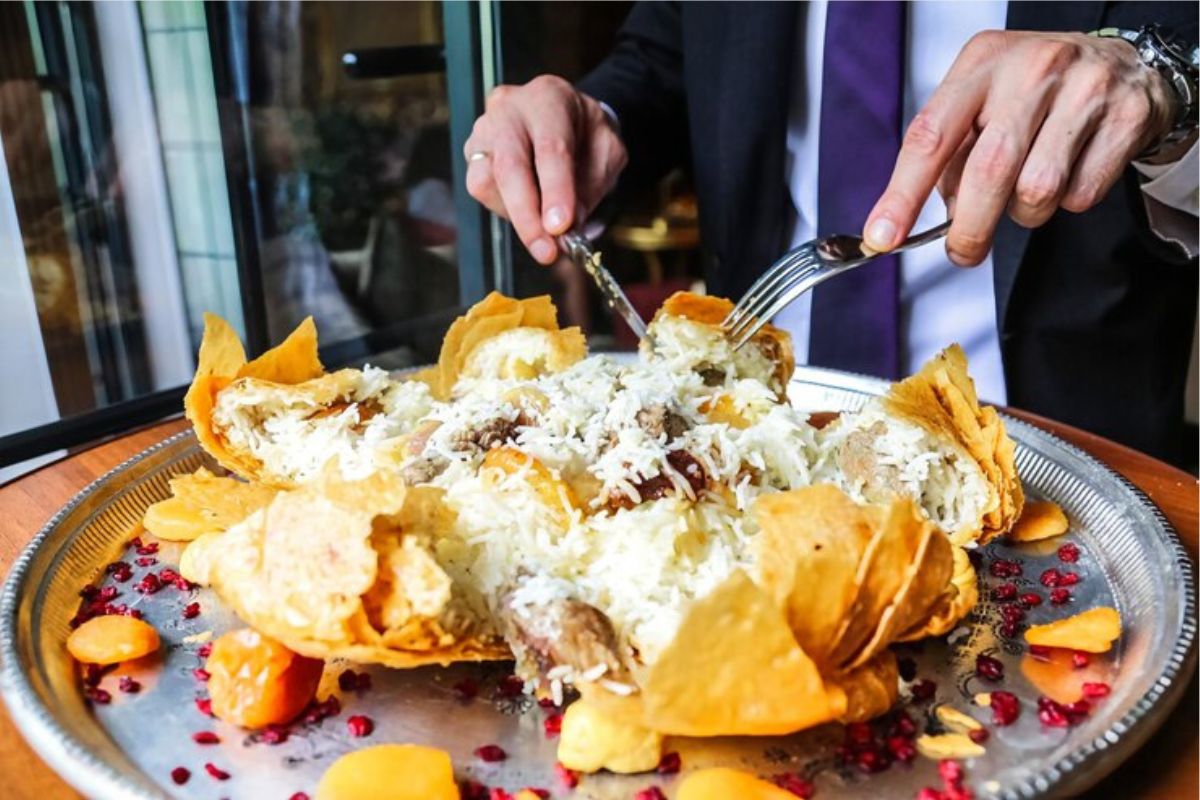Food
Celebrating Chilaquiles: A Culinary Fiesta

Few dishes embody the rich culinary heritage of Mexico as vibrantly as chilaquiles. A beloved staple across the country, this traditional Mexican breakfast dish has transcended borders to become a favorite worldwide. Celebrating chilaquiles means more than just savoring a plate of this delightful comfort food—it’s about honoring a centuries-old tradition that brings together family, flavors, and history.
Chilaquiles: The Heart of Mexican Cuisine
At the heart of Mexican cuisine, chilaquiles represent more than just a meal. They are a symbol of resourcefulness and tradition, born out of the need to use leftover tortillas creatively. Typically served as a hearty breakfast, chilaquiles are made by frying tortilla chips until they’re crispy, then simmering them in a savory sauce—red (rojo) or green (verde), depending on regional preferences. The dish is often garnished with a medley of toppings such as fresh cheese, onions, sour cream, and a fried egg, making it a versatile and satisfying choice for any meal of the day.
The Origins of Chilaquiles: A Journey Through Time
The origin of chilaquiles can be traced back to pre-Hispanic times when indigenous Mexicans used corn as a staple food. The word “chilaquiles” itself comes from the Nahuatl language, where “chīlāquilitl” roughly translates to “herbs or greens in chili broth.” This dish was initially a way to repurpose stale tortillas, demonstrating the resourcefulness and ingenuity of Mexican cooking. Over time, chilaquiles evolved, incorporating various regional influences and becoming the beloved dish we know today.
How to Make Traditional Chilaquiles at Home
Ingredients You’ll Need:
- Corn tortillas
- Cooking oil
- Red or green salsa (homemade or store-bought)
- Queso fresco or Cotija cheese
- Mexican crema or sour cream
- Sliced onions
- Fresh cilantro
- Eggs (optional)
Step-by-Step Recipe:
- Prepare the Tortillas: Cut the tortillas into quarters or strips. Heat oil in a pan and fry the tortilla pieces until they’re golden and crispy. Drain excess oil on paper towels.
- Choose Your Salsa: The choice between red or green salsa depends on your preference. Red salsa is typically made with tomatoes and dried chilies, while green salsa uses tomatillos and green chilies. Both can be made from scratch or purchased from a store.
- Simmer the Tortillas: In the same pan, pour in your salsa of choice and heat until it starts to simmer. Add the fried tortillas and stir to coat them evenly. Cook for a few minutes until the tortillas soften slightly but still retain some crispiness.
- Add Toppings: Transfer the chilaquiles to a plate and top with crumbled queso fresco, a drizzle of crema, sliced onions, and fresh cilantro. For a heartier meal, add a fried egg or shredded chicken on top.
- Serve and Enjoy: Chilaquiles are best served immediately, while they’re still warm and slightly crispy. Pair with refried beans or a side of avocado for a complete breakfast.
Exploring Regional Variations of Chilaquiles
While the basic components of chilaquiles remain consistent, the dish varies significantly across different regions of Mexico. For instance, in Mexico City, chilaquiles are often served with a generous helping of chicken and topped with avocado slices. In the Yucatan Peninsula, it’s not uncommon to find chilaquiles with a tangy habanero salsa, adding a fiery kick to the dish. Each variation offers a unique taste of Mexico’s diverse culinary landscape, making celebrating chilaquiles a delightful experience for the palate.
Chilaquiles vs. Nachos: What’s the Difference?
Though chilaquiles and nachos both involve tortilla chips and toppings, they are distinct in preparation and flavor. Nachos are typically served as a snack or appetizer, with toppings like melted cheese, jalapeños, and sour cream. Chilaquiles, on the other hand, are cooked in a sauce, making them more of a main dish. The tortillas in chilaquiles are meant to be slightly softened by the sauce, creating a unique texture that’s different from the crunchy chips used in nachos.
The Health Benefits of Chilaquiles
Chilaquiles, like many traditional Mexican dishes, are rich in nutrients when prepared with fresh, wholesome ingredients. Corn tortillas provide a good source of fiber and essential minerals like magnesium and phosphorus. The use of fresh tomatoes and tomatillos in salsa adds a dose of vitamins A and C, along with antioxidants. Toppings like avocado contribute healthy fats, while eggs and cheese add protein, making chilaquiles a balanced and satisfying meal.
Where to Find the Best Chilaquiles in Mexico
If you’re ever in Mexico, tasting chilaquiles at a local eatery is a must. In Mexico City, renowned spots like Café de Tacuba and El Cardenal serve some of the best chilaquiles in the country, offering a taste of tradition in every bite. Oaxaca, known for its rich culinary heritage, offers a unique take on chilaquiles, often incorporating mole sauce for an added depth of flavor. No matter where you go in Mexico, you’re sure to find a version of chilaquiles that captures the essence of this beloved dish.
The Cultural Significance of Celebrating Chilaquiles
Celebrating chilaquiles is not just about enjoying a delicious meal; it’s about connecting with a piece of Mexican culture. This dish is often associated with comfort, family gatherings, and the warmth of a home-cooked meal. In many households, chilaquiles are a weekend tradition, served on leisurely mornings when families have time to sit down together and enjoy a hearty breakfast. The act of preparing chilaquiles is also a way to honor the traditions passed down through generations, preserving the flavors and techniques of Mexican cooking.
Modern Twists on Traditional Chilaquiles
While traditional chilaquiles remain a favorite, modern chefs have begun experimenting with the dish, adding contemporary twists to this classic. Some popular variations include chilaquiles topped with grilled vegetables, seafood, or even exotic ingredients like truffle oil. These innovative takes on chilaquiles offer a fresh perspective while maintaining the dish’s essential qualities. Whether you prefer the traditional version or a modern twist, celebrating chilaquiles is always a flavorful adventure.
Chilaquiles: A Versatile Dish for Any Occasion
One of the reasons chilaquiles have remained popular for so long is their versatility. They can be enjoyed at breakfast, lunch, or dinner, and the toppings can be easily adjusted to suit different tastes and dietary preferences. For a lighter version, opt for baked tortillas instead of fried, and use a salsa made from fresh, ripe tomatoes. Vegetarians can load their chilaquiles with beans, avocado, and grilled vegetables, while meat lovers might enjoy adding shredded beef or chorizo.
Celebrating Chilaquiles with Friends and Family
There’s something special about sharing a plate of chilaquiles with loved ones. Whether it’s a casual weekend brunch or a festive gathering, chilaquiles bring people together with their comforting flavors and vibrant presentation. To make your next gathering even more special, consider setting up a chilaquiles bar, where guests can customize their plates with a variety of toppings and salsas. This interactive approach to dining adds a fun and personal touch to the meal, ensuring that everyone can celebrate chilaquiles in their own way.
Also Read: Exploring Çeciir: A Dive into Turkish Cuisine
FAQs
What are chilaquiles traditionally served with?
Chilaquiles are traditionally served with refried beans, a fried egg, or shredded chicken. They are often garnished with toppings like queso fresco, crema, onions, and fresh cilantro.
Can chilaquiles be made vegetarian?
Yes, chilaquiles can easily be made vegetarian by using vegetable-based toppings such as avocado, beans, and grilled vegetables, and omitting meat-based ingredients.
What is the difference between chilaquiles rojos and chilaquiles verdes?
Chilaquiles rojos are made with a red salsa, typically from tomatoes and dried chilies, while chilaquiles verdes use a green salsa made from tomatillos and green chilies.
Are chilaquiles spicy?
The spiciness of chilaquiles depends on the salsa used. If you prefer milder flavors, you can opt for a less spicy salsa or adjust the amount of chili used.
Can I use store-bought tortillas to make chilaquiles?
Yes, store-bought tortillas work well for making chilaquiles. Just be sure to fry them until they’re crispy before adding them to the sauce.
How do I keep chilaquiles from getting too soggy?
To keep chilaquiles from getting too soggy, serve them immediately after adding the sauce. You can also control the amount of sauce used, adding just enough to coat the tortillas without overwhelming them.
Conclusion
Celebrating chilaquiles is a delightful way to experience the rich flavors and traditions of Mexican cuisine. Whether you’re enjoying them at a local eatery or making them at home, chilaquiles offer a unique blend of history, culture, and culinary creativity. As you savor each bite, you’re not just enjoying a delicious meal—you’re participating in a tradition that has been cherished for generations. So next time you’re in the mood for a meal that’s both comforting and full of flavor, remember to celebrate chilaquiles.
Food
Maryjays DC Weed Dispensary Juice Bar Reviews

Maryjays DC Weed Dispensary Juice Bar Reviews Maryjays DC Weed Dispensary Juice Bar in Washington, D.C., has gained significant attention for its unique combination of premium cannabis products and health-conscious juice offerings. Unlike traditional dispensaries, it integrates wellness elements, making it a standout destination. Visitors appreciate the welcoming atmosphere, knowledgeable staff, and quality product selection, which contribute to its growing popularity among cannabis users and health-conscious individuals.
Location and Ambience Located in the heart of Washington, D.C., Maryjays DC provides a modern and inviting atmosphere. The dispensary is designed to be both aesthetically pleasing and comfortable for customers. The juice bar section adds an extra layer of relaxation, creating a setting where visitors can unwind while exploring cannabis options. With sleek interiors and a clean layout, customers find it easy to navigate the product selection and juice offerings.
Cannabis Product Selection Maryjays DC Weed Dispensary Juice Bar Reviews Maryjays DC boasts a diverse selection of high-quality cannabis products. Customers can choose from various strains of flower, including indica, sativa, and hybrid options, each catering to different experiences. Additionally, the dispensary offers pre-rolls, edibles, concentrates, tinctures, and vapes. The products are sourced from reputable suppliers to ensure purity and potency. With options available for both experienced users and beginners, the dispensary provides a comprehensive cannabis experience.
The Juice Bar Experience What sets Maryjays DC apart is its wellness-focused juice bar. Offering freshly pressed juices and smoothies, the bar aims to complement the cannabis experience. Popular drinks include energy-boosting blends and calming elixirs designed to match different cannabis effects. The inclusion of natural ingredients like turmeric, ginger, and kale enhances the health benefits. Customers appreciate the opportunity to enjoy a refreshing beverage while selecting their cannabis products.
Customer Service and Personalized Shopping A major highlight of Maryjays DC is its customer service. The staff is highly trained to assist customers in making informed choices. Whether someone is new to cannabis or an experienced user, personalized recommendations are provided based on individual preferences and needs. Customers frequently praise the dispensary’s approach to education, which ensures that they leave with a deeper understanding of cannabis products and their effects.
Customer Reviews and Testimonials Maryjays DC has received positive feedback across various platforms. Many customers commend the dispensary for its high-quality products, friendly service, and innovative approach. Online reviews highlight the cleanliness of the store, the efficiency of service, and the overall welcoming environment. Some customers have noted occasional product shortages, but overall, the experience is described as enjoyable and worthwhile. The dispensary has maintained a strong reputation for consistency and customer satisfaction.
Community Engagement and Events Beyond selling cannabis, Maryjays DC is actively involved in community engagement. The dispensary hosts educational workshops, wellness events, and collaborations with local businesses. By promoting cannabis awareness and responsible use, Maryjays contributes to the local cannabis culture. Partnerships with artists and entrepreneurs further enhance the community-driven aspect of the business, making it a hub for both cannabis enthusiasts and wellness advocates.
Comparison with Other Dispensaries Maryjays DC stands out in a competitive market due to its dual approach of offering both cannabis products and wellness options. While many dispensaries focus solely on cannabis sales, Maryjays integrates a lifestyle element, making it appealing to a broader audience. The combination of high-quality cannabis, a refreshing juice bar, and community engagement gives it a distinct identity in Washington, D.C.’s dispensary scene.
Potential Areas for Improvement Despite its many strengths, there are areas where Maryjays DC could improve. Some customers have reported long wait times during peak hours, which could be addressed by streamlining service processes. Additionally, maintaining consistent stock levels for popular products would enhance customer satisfaction. Implementing an online ordering system could further improve convenience for frequent visitors.
Future Expansion and Plans Maryjays DC has expressed interest in expanding its offerings and reach. Plans to introduce CBD-infused juices and snacks are being considered to cater to a growing market. Additionally, potential collaborations with local farmers may allow for more sustainable product sourcing. The dispensary is also looking into opening additional locations to accommodate increasing demand. With these developments, Maryjays aims to redefine how cannabis is integrated into wellness culture.
see also Discover the Best Smoothie CCL Recipes and Benefits
Conclusion: Maryjays DC Weed Dispensary Juice Bar in Washington, D.C., is more than just a dispensary; it is a wellness destination. By combining high-quality cannabis with health-conscious juice offerings, it provides a unique and enriching experience for customers. With excellent customer service, strong community involvement, and plans for future growth, Maryjays continues to set a new standard in the cannabis industry. Whether visiting for top-tier cannabis or a revitalizing juice, customers leave with a sense of satisfaction and well-being.
Food
Healthy Freeze Dried Candies

Consumers see snacks as possible solutions to fill their dietary requirements and target wellness goals, and the market for health-oriented snacks is growing. Wholesale freeze dried candy is also growing in popularity as an imitation of candy that utilizes easy methods with natural produce, minimal processing, and long shelf life.
Health-Conscious Trends Driving Freeze-Dried Candy Demand
Knowledge of food is an attribute consumers need as they demand tasty snacks. Essentially, freeze-dried candy ticks these trend boxes as it is a processed nutrient product with no health sacrifice.
Demand for Clean Label Snacks
Products that contain ingredients that consumers are able to read and understand. That means that, unlike most conventional candies that feature artificial sweets or preservatives, the freeze-dried candy will be made up only of fruit, sugar (or not), and natural flavorings.
Prioritize to Preserve Nutrients
This freeze-drying process will preserve natural vitamins and minerals from fruits and vegetables. Thus, freeze-dried candy is a snack that can satisfy sweet tooths without the associated health disadvantages.
Freeze-Dried Candy and Special Dietary Needs
Freeze-dried candy can suit the special diet needs of many customers.
Vegan and Plant-Based Options
Freeze-dried fruit candy is naturally vegan, and as the trend of plant-based and vegan diets takes off, this snack perfectly complies with ethical and dietary preferences. It is an excellent option for businesses targeting this growing market.
Gluten-Free and Allergy-Friendly
Many freeze-dried candies are gluten-free, dairy-free, and soy-free, suitable for people with food sensitivities or allergies. When the wrong candy ingredient could cause a health concern, freeze-dried candy can provide a sweet treat guilt-free to those needing to avoid gluten or other allergens.
Low Sugar, Diabetic-Friendly
With rising awareness against high sugar intake and diabetes management, freeze-dried candy provides a low-sugar or sugar-free candy option. Most freeze-dried fruits are relatively sweet in taste on their own, making them an appealing option for those looking to manage blood sugar levels.
The U.S. Market and Consumer Preferences
Demand for healthier snack options is increasing in the U.S. market. Millennials in search of clean-label products and parents in search of better kid snacks are interested in freeze-dried candy, widening its consumer demographic. The multipurpose of freeze-dried food & the convenience, portability, and functionality that attract many consumers to freeze-dried candy have made freeze-dried candy easily one of the sought-after snacks when traveling. Additionally, within an American marketplace that has taken health and wellness high on its priorities, freeze-dried candy is perfectly poised to capture the attention of the naturals-focused but very also functional, benefits-minded consumer group.
The Future of Freeze-Dried Candy in Health-Conscious Markets
Freeze-dried candy has proven to be a unique yet practical product with a promising future in the growing sector of health-conscious snacking.
Innovative Flavor Combinations
Consumers are eager for a flavor adventure. Freeze-dried candy producers are innovating through creative flavor combos that balance a healthy body against a willingness to be adventurous.
Conclusion
Health-conscious consumers opt for freeze-dried candy, which is minimally processed and contains some nutritional elements, as it offers a solution for diverse dietary requirements. While consumers are increasingly opting for healthy snacks, making candy with the freeze-drying process is even more lucrative for businesses. Such candies are easily available on Alibaba.com.
Food
Global Trade and Market Trends for Citric Acid

Bulk citric acid has been on the rise across the globe particularly because of the uses which are numerous in different industries. Citric acid finds application in the production of foods and beverages, medicines, cleaning agents and others. New markets are opening and new industries are emerging and this forms the basis of the dynamism in citric acid trade.
Supply Side of the Market
- Production Methods: Citric acid is primarily produced through fermentation of carbohydrates (such as sugar, glucose, or sucrose). As fermentation technology advances, production has become more cost-effective and sustainable, enhancing supply chain efficiency.
- Sustainability in Production: Growing emphasis on sustainable production practices has led to research into improving the efficiency of citric acid manufacturing, reducing waste, and lowering environmental impacts.
Citric Acid Trade Patterns
World trade in citric acid is characterized by flows of export and import between the main production and consumption areas. These trade patterns can be shaped by things like production prices, domestic legislation, and demand conditions.
Exports: Citric acid is produced in bulk and exported to emerging markets. Trade levels tend to remain constant in these areas and the quick availability of cost-efficient and high-end products are two of the primary things driving citric acid demand.
Imports: Conversely, some of the major citric acid consuming regions such as Europe and North America are dependent on imports as production in these regions is limited. Citric acid imports are also emerging from the Middle East & Africa as the developing industries enhance the use of citric acid in these regions.
Trade Barriers: Although citric acid trade is stronger, factors such as tariffs, trade regulations, and transportation logistics can affect the flow of goods. The effect of these barriers, however, varies significantly depending on the area and the individual applications of citric acid in local industries.
Emerging Markets and Trends Shaping the Citric Acid Industry
The global citric acid market is growing, with new trends emerging that are set to influence the future of this integral commodity.
Sustainability and Green Chemistry: The demand for sustainability will stimulate novel citric acid production. The market is likely to be driven by the implementation of environment-friendly production processes using renewable resources and relatively improved fermentation resources. This complements the rising demand for sustainable solutions in sectors like food, pharma, and cosmetics.
Natural and Organic Products: The expansion of the health and wellness market is driving the growth of demand for natural and organic products. Abstract Citric acid is a widely used organic acid an exponential increase in the use of citric acid in consumer products can be recently observed, especially in the natural food preservatives, cosmetics, and personal care products.
Technological Developments: There is an increasing use of biotechnology in citric acid production. Improvements in fermentation strategies and genetically modified microorganisms are streamlining production, driving down prices and increasing yields. Such improvements are essential in order to satisfy the growing demand for citric acid in the industry.
Conclusion
The changing market will also impact supply and demand for citric acid as new trends emerge, such as sustainability, health-oriented consumer preferences, and technological innovations. Knowing these trends and using platforms for sourcing will play a critical role in sustaining momentum and increasing competitiveness in the citric acid market in the long run.
-

 NEWS1 year ago
NEWS1 year agoSearchinventure: Redefining the Digital Experience
-

 HEALTH1 year ago
HEALTH1 year agoUnveiling the //vital-mag.net blog: Your Gateway to Health and Wellness
-

 NEWS1 year ago
NEWS1 year agoThe Alicia Case in Atlanta: A Deep Dive
-

 FASHION1 year ago
FASHION1 year agoHow to Style Floral Long-Sleeve Homecoming Dresses for a Glamorous Look
-

 Pets1 year ago
Pets1 year agoUltimate Strength: Heavy-Duty Tactical Dog Collars for Large Breeds
-

 BUSINESS1 year ago
BUSINESS1 year agoPedro Vaz Paulo: A Visionary Business Consultant Driving Success
-

 NEWS1 year ago
NEWS1 year ago2023-1954: A Journey Through the Decades
-

 TECHNOLOGY2 years ago
TECHNOLOGY2 years agoThe Evolution of Technology: From 1954 to 2023
